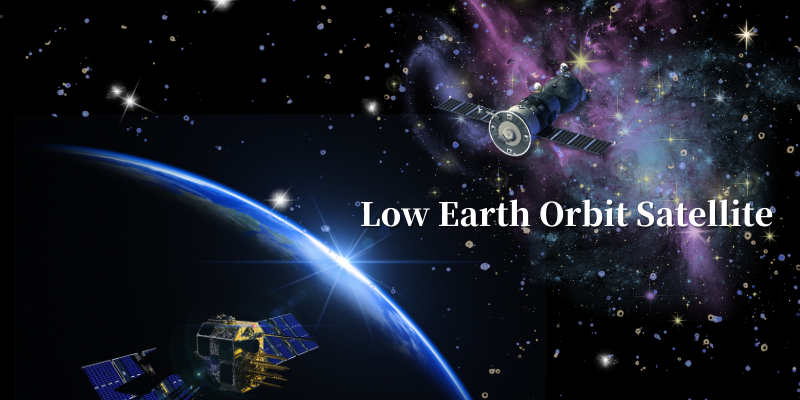- Home
- Blog
- Technology Trends
- Low Earth Orbit Satellites: The New Force Transforming Global Communications
Low Earth Orbit Satellites: The New Force Transforming Global Communications

As space technology advances at a rapid pace, the initiative led by SpaceX CEO Elon Musk to support Low Earth Orbit Satellites (LEO) has sparked worldwide discussion. Their pivotal role in wartime communications has drawn attention to their wide-ranging potential. LEO satellites—artificial satellites orbiting between approximately 300 and 2,000 kilometers above Earth—are gradually reshaping global communications, Earth observation, and national defense. From reducing communication latency and expanding network coverage to driving integrated applications for next-generation 5G/6G Non-Terrestrial Networks (NTN), LEO satellites are emerging as a critical technological pillar for both current and future space industries.
1. What Are LEO Satellites?
Artificial satellites can be classified by their orbital altitude and intended purpose into high-orbit, geosynchronous (GEO), medium-orbit (MEO), and low-orbit satellites. Each category differs in technical requirements, cost, and application scenarios.
LEO satellites specifically operate at altitudes between roughly 300 and 2,000 kilometers above Earth’s surface. Compared to GEO and MEO satellites, LEO satellites offer several key advantages:
- Low Latency and High-Speed Transmission: Their close proximity to Earth significantly reduces signal transmission time, making them ideal for real-time communications and data transfer.
- Lower Launch Costs and Rapid Deployment: With their compact design and cost-effective manufacturing, these satellites can be produced and deployed quickly in large constellations, meeting global coverage demands.
- High Flexibility: Although individual satellites may have relatively short lifespans, their networked constellations ensure continuous and stable service.
2. Main Applications of LEO Satellites
LEO satellites are versatile, serving numerous fields. Key areas include:
a. Communications and Network Coverage
- Global Internet Access: Constellations such as SpaceX’s Starlink, Amazon’s Project Kuiper, and OneWeb aim to provide low-latency, high-speed internet services, particularly benefiting remote regions and emergency communications during disasters.
- Backup Communications and Disaster Response: In cases where terrestrial networks are damaged or infrastructure is limited, LEO satellites offer a reliable communication alternative for military, government, and public needs.
b. Earth Observation and Remote Sensing
- Environmental and Weather Monitoring: Thanks to their proximity, LEO satellites can deliver high-frequency imagery and data updates to support weather forecasting, disaster monitoring, and environmental assessments.
- Earth Resource and Environmental Monitoring: Beyond meteorology, these satellites are used in geophysical research and space science to provide precise remote-sensing data.
c. Logistics and Transportation Monitoring
- Freight Tracking and Security: In the logistics sector, LEO satellites help monitor the positions and statuses of ships, airplanes, and vehicles, enhancing efficiency and safety in transport operations.
d. National Defense and Security Applications
- Military Communications and Reconnaissance: LEO satellites provide real-time, hard-to-intercept communication services and, when combined with other surveillance technologies, support intelligence gathering and secure military operations.
3. Future Trends in LEO Satellite Development
With ongoing technological advancements and expanding market demand, LEO satellite development is poised for several significant trends:
a. Constellation Networks and Mass Production
- Large-Scale Constellation Deployment: Current statistics indicate that over 11,500 LEO satellites are in orbit, forming a vast interconnected network that continues to grow.
- Modular Design and Reusability: Innovations in modular satellite design, rocket recovery, and increased payload capacities are drastically reducing launch costs.
b. Integration with 5G/6G and Non-Terrestrial Networks (NTN)
- NTN Applications: LEO satellites are set to become a key component in providing network coverage to remote areas. Future 6G networks are expected to integrate terrestrial (TN) and non-terrestrial (NTN) networks seamlessly.
- Spectrum and Technological Innovation: As demand for spectrum increases, new technologies are being developed to make more efficient use of available bandwidth. High-frequency bands (e.g., Ka, Q/V bands) offer greater bandwidth and faster data transmission but also pose challenges like rapid signal attenuation, which are being addressed through advanced beamforming and power compensation techniques.
c. Market Opportunities and Challenges
- Expanding Market Size: Global satellite communications revenue is growing exponentially, and LEO satellites are a major contributor to this boom, promising significant economic benefits.
- Space Debris and Resource Limitations: The sheer number of LEO satellites increases the risk of collisions with other satellites or space debris, and fierce competition for spectrum resources remains a challenge that requires technical breakthroughs and international cooperation.
Taiwan is also showing proactive engagement in the LEO satellite industry—from collaborating with international satellite operators in telecommunications to the national space center’s efforts in local satellite manufacturing and ground equipment development—demonstrating a strong domestic focus on this technology.
Looking ahead, as technology continues to advance and costs decrease further, LEO satellites are expected to see broader applications in global communications, scientific research, logistics monitoring, and national defense. This progress will drive digital and intelligent development worldwide.
Article Classification
Recent Articles
- Enterprise Cybersecurity Strategy: Zero Trust, Cyber Resilience, and AI Defense
- IoT and Smart Cities: Building a Smarter, More Sustainable Future
- Cloud Gaming Market Boom: The New Battleground for the Gaming Industry
- The Convergence of AI and Cloud Technologies: Dual Engines Driving the Future Technology
- Cybersecurity in the Digital Age: Common Threats and Defense Strategies

.png)
.png)
.png)